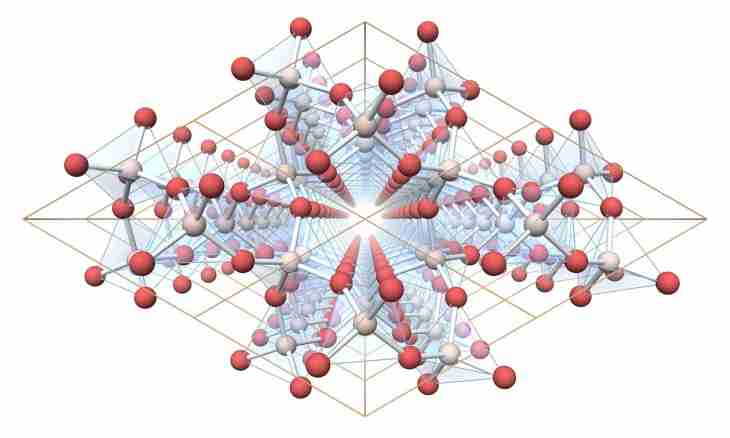In crystals the chemical particles (molecules, atoms and ions) are located in a certain order, in some conditions they form the regular symmetric polyhedrons. Allocate four types of crystal lattices — ionic, atomic, molecular and metal.
Crystals
Crystalline state is characterized by existence of a distant order in arrangement of particles and also symmetry of a crystal lattice. Firm crystals call three-dimensional formations at which the same element of structure repeats in all directions.
The correct form of crystals is caused by their internal building. If in them to replace molecules, atoms and ions with points instead of the centers of gravity of these particles, three-dimensional regular distribution - a crystal lattice will turn out. The repeating elements of its structure call elementary cells, and points — knots of a crystal lattice. Allocate several types of crystals depending on particles which form them and also from the nature of a chemical bond between them.
Ionic crystal lattices
Ionic crystals form anions and cations between which there is an ionic communication. Salts and hydroxides of the majority of metals belong to this type of crystals. Each cation is attracted by r to anion and makes a start from other cations therefore in an ionic crystal it is impossible to allocate single molecules. The crystal can be considered as one huge molecule, and its sizes are not limited, it is capable to attach new ions.
Atomic crystal lattices
In atomic crystals separate atoms are united by covalent communications. As well as ionic crystals, it is also possible to consider them as huge molecules. At the same time atomic crystals very firm and strong, badly install electrical equipment and heat. They are almost insoluble, the low reactionary ability is characteristic of them. Substances with atomic crystal lattices melt at very high temperatures.
Molecular crystals
Molecular crystal lattices are formed of molecules which atoms are united by covalent communications. Because of it between molecules weak molecular forces work. Such crystals differ in the small firmness, low temperature of melting and high fluidity. Substances which they form and also their fusions and solutions badly carry electric current.
Metal crystal lattices
In crystal lattices of metals atoms are located with the maximum density, their communications are delocalized, they extend to all crystal. Such crystals are opaque, differ in metal gloss, are easily deformed, at the same time well install electrical equipment and heat. This classification describes only limit cases, the majority of crystals of inorganic substances belongs to intermediate types — molecular and covalent, covalent and ion, etc. It is possible to give a graphite crystal as an example, in each layer at it covalent and metal communications, and between layers — molecular.

